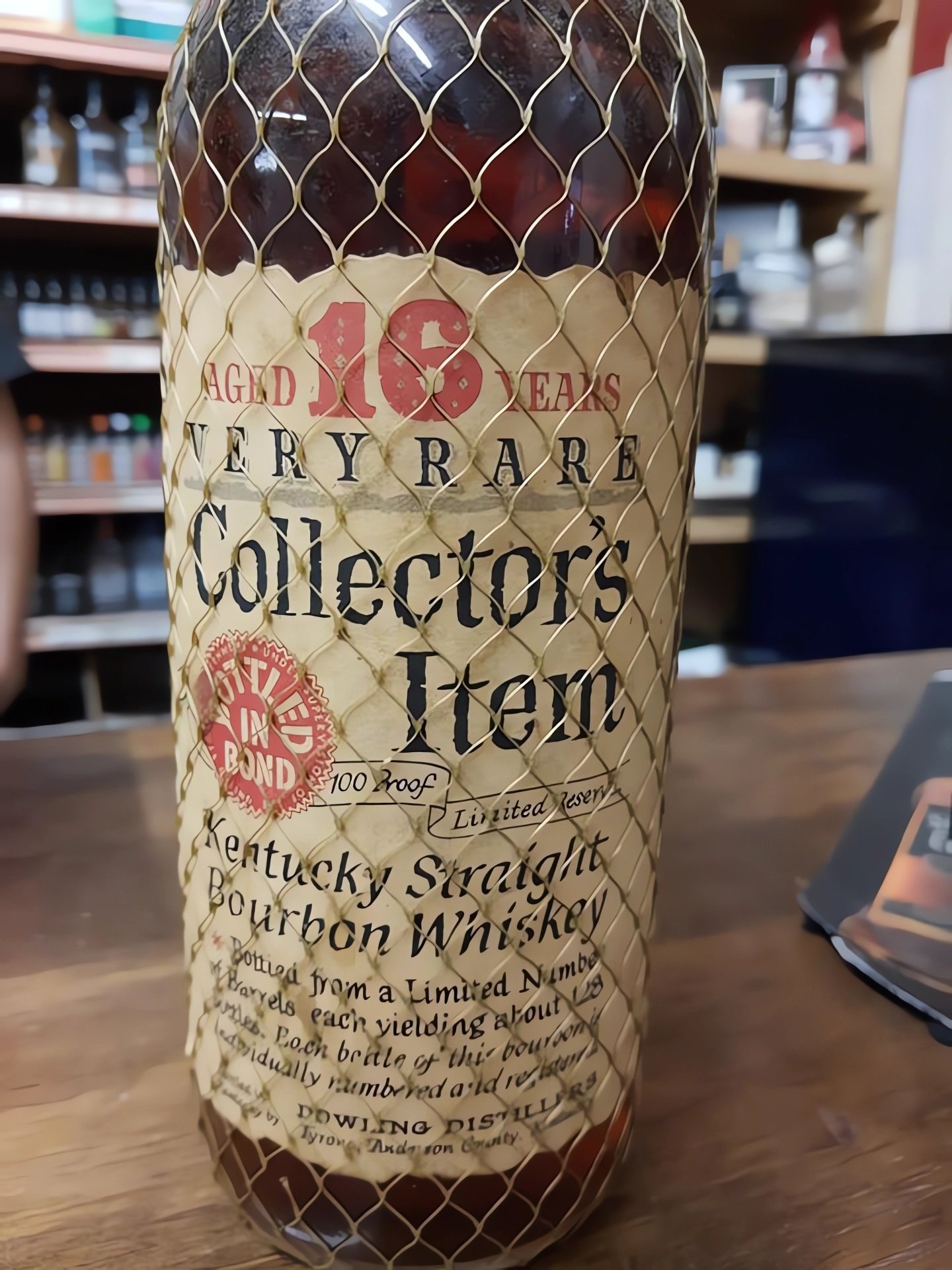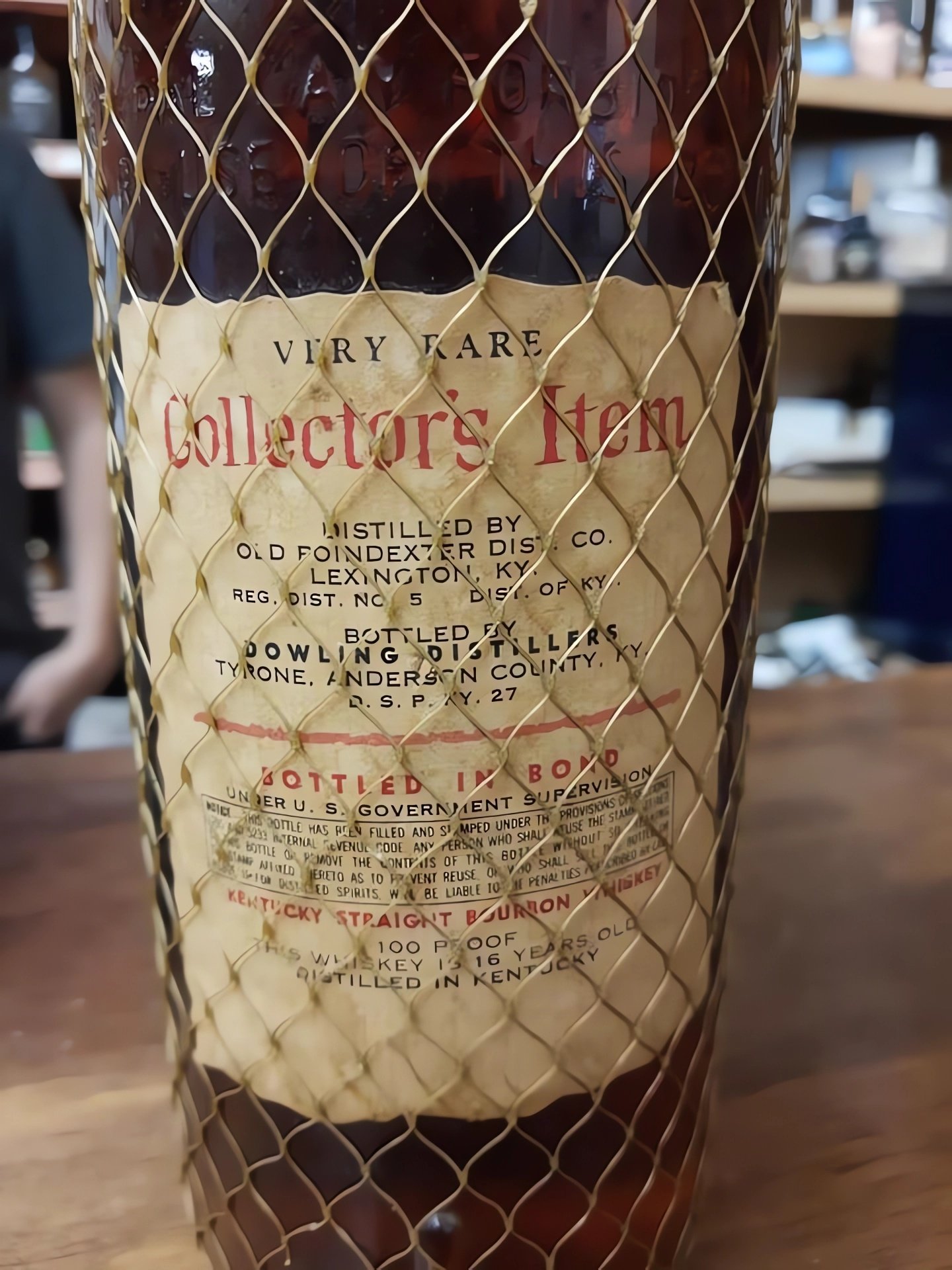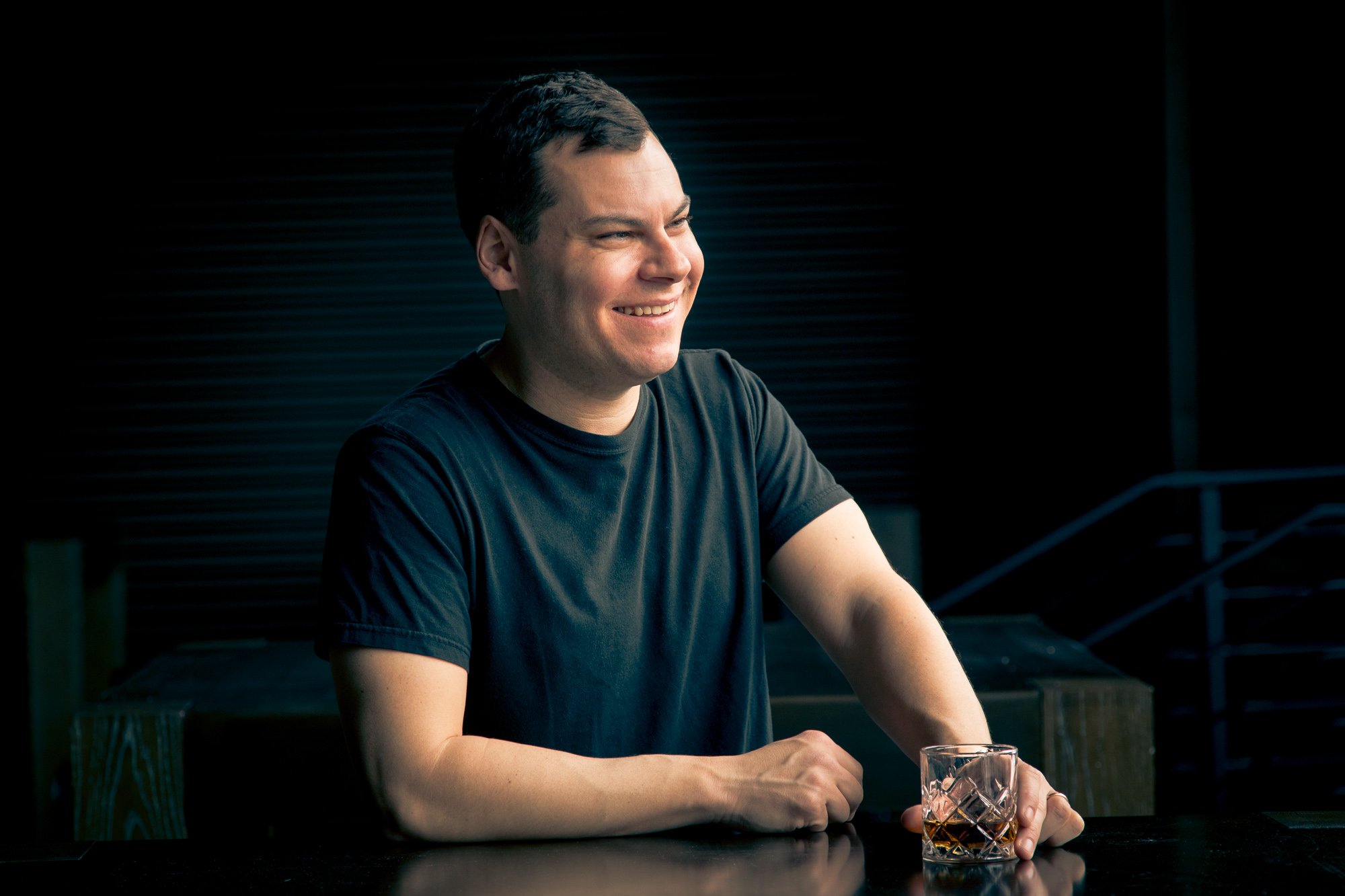Dusty Booze: Vintage Spirits and Their Collectors
Dowling Distillers Very Rare Collector’s Item 16-Year Bourbon. Photo credit Maggie Kimberl
A few years ago, after dropping my kids off at their grandpa’s house, I decided to take the scenic route home to avoid a wreck on the interstate. As we drove down the windy Kentucky roads along the Ohio River, I spotted a liquor store off the beaten path in a small town far from any distilleries. I decided to pop in and see if I could find anything that was difficult to find in Louisville, which was a lot of things, contrary to popular opinion. I found a few bottles of Early Times Bottled-in-Bond Bourbon in the 1 liter bottles, which had recently been sold by Brown-Forman to Sazerac and which Sazerac had yet to start bottling, and which were completely sold out in Louisville at the time. As I walked to the register, I noticed a glass case with some of the more sought-after bottles, including Henry McKenna 10-year, which was difficult to find at the time. I turned around to talk to the clerk when I spotted a dusty vintage bottle on the shelf behind him.
“What’s that?” I asked.
“Oh that’s junk. Someone found it in their mom’s basement and brought it to me. It’s no good,” he responded.
“Do you mind if I take a look at it?” I asked. He handed me a bottle of Dowling Distillers Very Rare Collector’s Item 16-Year Bourbon distilled in 1953 in Tyrone, Kentucky and bottled in 1969. The fill level was good and the liquid inside did not look cloudy.
“This is very valuable,” I told him. I went on to explain the history of the Dowlings in Kentucky’s Bourbon industry and the market for vintage whiskeys such as the one sitting on the counter between us. At the time, I estimated its value at around $2500, give or take, and advised him that the best use of it was to open and drink it and the second best use was to donate it to a charity auction to raise money for his kids’ sporting groups or other school activities. His eyes became huge. I told him that if he wanted to sell it to give me a call and I would connect him with someone who would give him a fair price for it (like noted whiskey collector Bill Thomas) and I gave him my card.
Later when I posted photos on Facebook of this beautiful vintage find, several people asked me how much I picked it up for.
“For the record, no I did not buy it and yes, I told him it wasn't junk and educated him about it,” I said.
Dusty Booze
Apparently, I am in the extreme minority, at least according to Aaron Goldfarb’s new book, Dusty Booze: In Search of Vintage Spirits, ( Abrams Press, March 5, 2024) This book covers the past, present, and future of dusty-hunting, and not just for whiskey. Goldfarb frames this collecting-obsession with the PEZ dispenser craze of the 1990s, when rare PEZ dispensers could fetch hefty sums with collectors. Goldfarb chronicles early modern booze collectors, though it could easily be argued that wine people have been collecting vintage wines for generations. Modern booze collectors are currently after dusty bottles of whiskey, sure, but did you know there’s a market for dusty rums, dusty tequilas, and even dusty bottles of Chartreuse?
Goldfarb takes a fascinating deep-dive into the psychology behind going into neighborhoods considered by many to be “warzones” and clearing the shelves of valuable bottles of historic beverage alcohol for fun, bragging rights, or to make a buck. There’s not really another book like this on the market because, not surprisingly, most people don’t want to talk about where or how they are finding treasure.
There’s some great information in here for those wishing to pursue vintage bottles of beverage alcohol, though Goldfarb does reiterate a few times that a lot of the vintage whiskey is likely gone by now. There’s a great deal of information about dating vintage bottles by things like bottle size, information about types of vintage spirits that are no longer made, and what types of vintage spirits might be easy to find still (vodka, duh).
I got a little chuckle when I got to the page that said people reach out to Bourbon Historian Michael Veach when they have questions about vintage bottles. While this is technically true, I am the person who set up his website and social media and I had to set an auto-responder to basically tell people to go read the blog because he literally cannot answer all these questions: “For information about the age of an old bottle, please check here: Dating Old American Whiskey Bottles. This is an automatic response. Thanks!” I’m probably one of three people in the world who knows about this auto-responder and that he can’t get to all the messages people send him, though I will be interested to see whether this book generates an uptick in these messages.
Average people don’t have the free time or disposable income to hunt for increasingly rare vintage bottles, so this book is a great way to live vicariously through those who can. That said, some of the behaviors outlined in the book are what the youths would call “cringey.” What is aspirational for one person may not be for another. Consider it a study in human anthropology.
Some of the more inspiring stories include that of Gary Crunkleton’s quest to get the laws changed in North Carolina to allow him to sell vintage spirits at his bar, The Crunkleton. Many collectors have turned their love of hunting dusties into wonderful businesses. Brad Bonds is another of these stories, and he just announced a second location of his Revival Vintage Spirits Shop in Elizabethtown, Kentucky, the same town where the Whiskey House of Kentucky is being built.
We spoke with Goldfarb to learn more after reviewing this book.
Interview with Aaron Goldfarb
Aaron Goldfarb
Was it difficult to get people to talk to you about this topic?
Aaron Goldfarb: Yes and no. As a journalist you quickly learn that people love to talk about their hobbies and passions. Especially to someone like me who I think they know shares these same passions to a certain extent. They also might have a braggadocio about wanting the world to know how great of scores they have made. There's an odd amount of rivalry and competitiveness in the vintage spirits game. But dusty hunters are also a very secretive bunch—many of them were afraid to divulge information to me about bottles that are out there but which they have yet to reel in, for fear that I might alert another dusty hunter and put him on the scent. I always said: "Hey, the book isn't publishing until March, 2024, so you just need to secure the bottles before then!" That usually worked.
Do you get the impression that all the dusties have been collected or are there more out there?
When I first heard about dusty hunting in the early 2010s, I already presumed the end was near. I was wrong. And if I said the end was near now I'd surely be proven wrong as well. I think the days of finding incredible caches of old Stitzel Weller at random liquors in America are probably over. I imagine just about every liquor store has been dusty hunted by now. But I still think there are incredible dusty bottles lurking in basements or attics or even the liquor cabinets of aging people who may die soon and have their collections put up in an estate sale by progeny that don't know any better.
Were there any stories that you had to leave out of your book?
Not really, though I continue to report on the Howard Hughes' bottles at the center of my book because I'm not quite sure that story is complete yet. I've yet to learn anything new that didn't make the book, but I can't help feeling there is more information and intrigue out there.
Are you personally a whiskey collector? What is your favorite bottle in your collection? What do you wish you had?
Yes, though not to the degree of any one featured in the book. I acquire interesting bottles when I can, but never work too hard to locate anything and never pay too much either (my wife might disagree). I do like to collect birth year bottles (distilled or bottled on), however, which would be 1979 for me. A 1979 Old Grand Dad, then distilled at National Distillers, is one of my favorites. As for what I wish I had, I continue to kick myself that I didn't acquire Red Hook Ryes when they were available and affordable, though, at least I have tasted it a few times.
I don't know why I was surprised by this, but there are almost no women in your book. Do you find that dusty hunting is predominantly a male endeavor? Why do you think that is?
I certainly would have loved to feature women hunters, I just couldn't find any of note. Please reach out to me if you're out there. (And, to be fair, Mike Jasinski's wife Claire helped greatly in his hunting and is mentioned in the book.) But I've come to believe that men have a certain collecting bug/obsession/sickness you might say that most women don't seem to have. I know I have it myself to a certain degree. To be a world-class collector, or hunter, in any realm, you have to be willing to put a lot of one's life aside and instead devote all that time to the hobby, to the hunt. And I don't think most women are willing to sacrifice jobs, family, friends, romance, you name it, to do that. You look at other collectors/obsessives throughout history and literature and they are almost always men too, whether John LaRoche, the orchid collector at the center of Susan Orlean's "The Orchid Thief," the sneakerheads on social media, or even the record obsessives in the (admittedly fictional) "High Fidelity."
Looking for more? Read our review of Dusty Booze.




